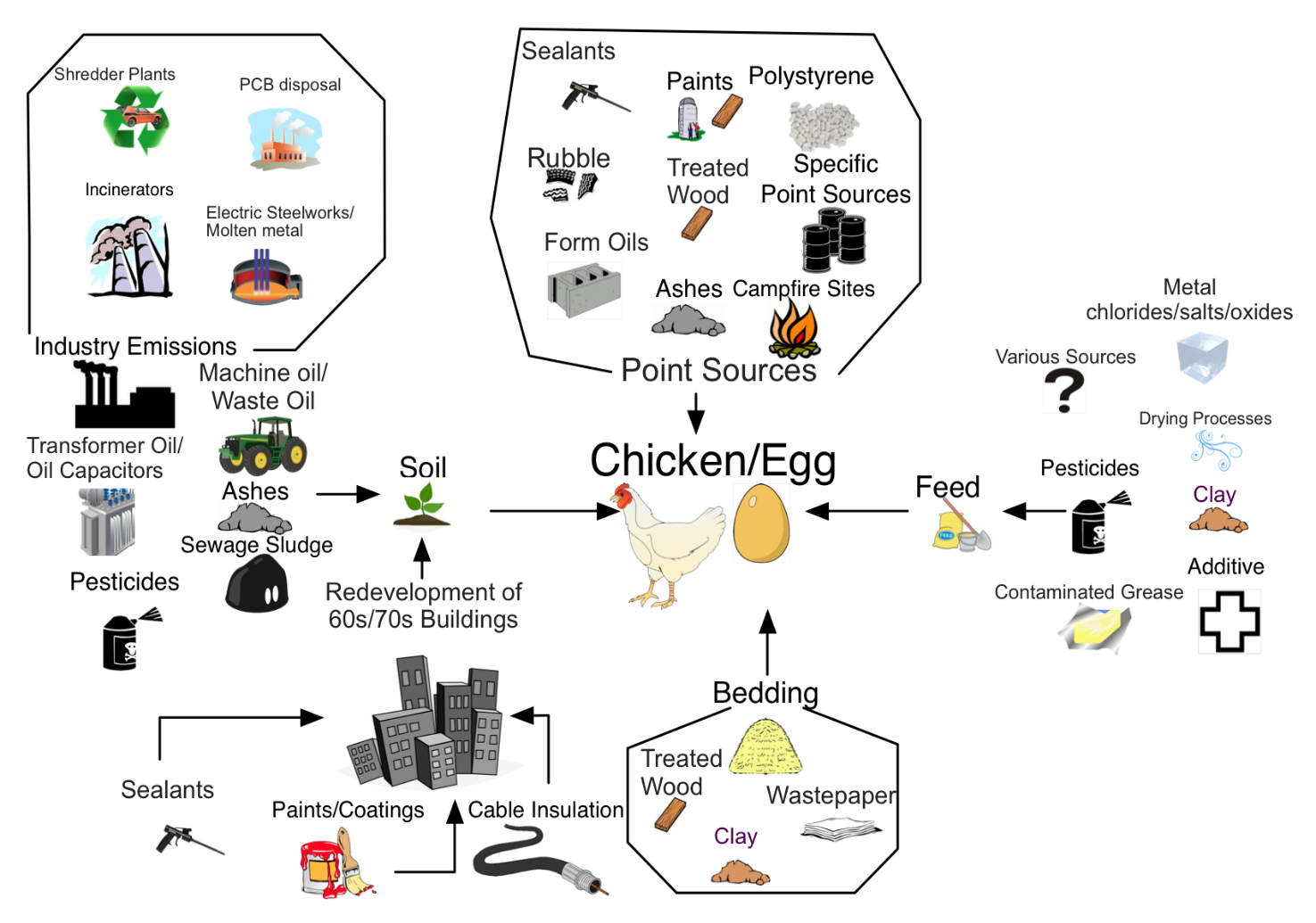Cancer-causing pollutants in the global food chain exceed EU safety limits in 90% of the studied areas
Published 20 June, 2022
A study conducted by an international team of researchers has found that in nearly 90% of the areas studied, levels of cancer-causing dioxins and polychlorinated biphenyls (PCBs) in free-range eggs exceeded EU regulatory food limits. The team reviewed data from Asia, Africa, Europe, and North and South Africa. The highest dioxin-contaminated eggs were found near an e-waste site in Agbogbloshie, Ghana; a child eating one egg from the site would ingest more dioxins than the European Food Safety Authority (EFSA) considers a “tolerable intake” for five years.
Dioxins (polychlorinated dibenzo-p-dioxins and furans, or PCDD/Fs) are among the most toxic of known substances and can cause cancer. They are unintentionally released during the burning of waste and by various industrial processes, including metal production. PCBs are also carcinogenic to humans. Over the years, 1.3 million tonnes of PCBs have been used globally in electrical equipment, in buildings and for industrial applications. Both groups of chemicals are persistent organic pollutants (POPs) that are long-lasting, accumulate in living organisms, create widespread pollution globally, and are known to cause serious environmental and health problems. They are among the original “dirty dozen” substances banned and/or regulated globally under the Stockholm Convention in 2004.
Yet this new study, published in KeAi journal Emerging Contaminants, shows that, nearly two decades later, dioxins and dioxin-like PCBs remain an environmental health threat around the world.
Dr. Jindrich Petrlik is Director for Arnika – Toxics and Waste Programme, a Czech non-profit organization striving for a better environment, and an advisor on dioxins and waste to IPEN – a global network seeking a toxics-free future. He is also lead author of the study. According to Dr. Petrlik: “The toxic legacy of dioxins and PCBs continues to put our children and families at risk. We urgently need to achieve lower POP content levels in waste and a stronger implementation of the Stockholm Convention to protect our health and the environment from these long-lasting chemical threats.”
The study monitored eggs from more than 110 free-range chicken flocks near waste incinerators, metal industries, cement plants, landfills, e-waste sites, chemical plants, and other facilities. The team found that:
- 88% of the egg samples were above the EU safety limits for dioxins or for the sum of dioxins and PCBs. In many areas, children consuming just a few eggs a week would exceed the tolerable intake for dioxin established by the EFSA, often by 10 and in some cases up to several 100 times.
- 92% of egg samples collected from areas near incinerators exceeded the EU regulatory food limits.
- 100% of the egg samples collected from areas near industrial metal sites and e-waste recycling facilities exceeded the EU regulatory food limits.
- 14% of the egg samples exceeded the EU food limits by more than 10 times. One sample from an e-waste site in Ghana contained the highest contamination ever detected, at more than 264-times the EU food limit for dioxins.
Dr. Roland Weber, corresponding author of the study and a consultant to UN agencies for the implementation of the Stockholm Convention, stressed that “this review of the IPEN egg studies, together with the reviewed scientific literature, highlight that we need a systematic assessment of chicken eggs and other free-range livestock around these emission sources. It also shows the need to reduce human exposures to sites that have been contaminated with POPs and other persistent pollutants”.
Eggs are often locally produced in developing countries and are an important food source as they are inexpensive and highly nutritious. Eggs are also a major pathway for human exposure to toxic chemicals from soils and are sensitive biomarkers of environmental contamination of soils.
In addition to the industrial sites, contaminated eggs were found at many sites where plastic was incinerated. Ash from incineration or metallurgical plants is often disposed of into the environment and is a common source of soil contamination. However, according to the study authors, the current standards under the Basel Convention for “low limits” of POPs allow extremely high concentrations of dioxins; for example, a single kilogram of ash is allowed to contain dioxin at a level that would make 7,000 kilograms (7 tonnes) of soil unfit for producing eggs from free-range chickens. They also point to the fact that the annual amount of dioxins in waste incineration ash exceeds the maximum amount – by up to 133 times – that the EFSA would consider a tolerable intake for the entire human population.
Some of the recommendations from the study include:
- Strengthening regulatory limits for contaminated soils and fertilisers, and preventing soil pollution through improved chemical and waste management.
- An overall reduction of plastic use and an environmentally sound management of waste plastics, along with export restrictions on plastic waste and e-waste, as required by the Basel Convention.
- Capacity building and support for developing countries so they can assess and control industrial releases and monitor food and human exposures.
- Improved management of POP waste and tracking of pollution from the POP lifecycle.
- Compensation for farmers and affected populations by applying the ‘polluter pays’ principle.

Image: The major pathways by which chickens are exposed to PCDD/FS and PCBs. CReDIT: Weber et al. 2018 https://doi.org/10.1186/s12302-018-0166-9; design AleX Watson
###
Contact the author: Jindrich Petrlik, Jindrich.petrlik@arnika.org